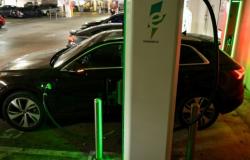The ecological penalty has become an essential element of the French automotive landscape. This tax measure, put in place to encourage the purchase of less polluting vehicles, raises many questions. Let's take a detailed look at this device and its impact on the automotive market.
Understanding the principle of the ecological penalty
The ecological penalty is a tax applied when purchasing a new vehicle. Its main objective is to discourage the purchase of cars with high CO2 emissions. This progressive tax is calculated based on the carbon dioxide emissions per kilometer of the vehicle concerned.
The amount of the penalty can vary considerably, ranging from a few tens of euros to several thousand for the most polluting models. For example, in 2024, a vehicle emitting 118 g of CO2/km will be subject to a penalty of €50, while a model exceeding 194 g/km will be subject to the maximum penalty of €60,000.
It is fundamental to note that this device is part of a global strategy to reduce greenhouse gas emissions. As such, it complements other measures such as the ecological bonus for electric vehicles, which could be subject to adjustments in 2025.
Evolution and scale of the ecological penalty
The ecological penalty is subject to annual reviews within the framework of the Finance Law. These adjustments aim to gradually strengthen its impact on consumer choices. Here is an overview of the developments planned for the coming years:
| Year | Trigger threshold (g CO2/km) |
|---|---|
| 2024 | 118 |
| 2025 | 113 |
| 2026 | 106 |
| 2027 | 99 |
This downward trend in the trigger threshold illustrates the desire of public authorities to accelerate the transition to cleaner vehicles. At the same time, a drastic increase in the penalty is planned for 2025, further increasing the pressure on builders and buyers.
Exemptions and special cases
Certain categories of vehicles and drivers benefit from exemptions or reductions from the ecological penalty. Among them, we find:
- 100% electric vehicles
- Hydrogen vehicles
- Vehicles adapted for people with reduced mobility
- Certain professional vehicles (ambulances, police vehicles, etc.)
In addition, Reductions are provided for large families. The CO2 emission rate taken into account is reduced by 20 g/km per dependent child, from the third child onwards, for the purchase of a vehicle with five seats or more.
It is relevant to note that these exemptions could evolve in the years to come. For example, the status of plug-in hybrid vehicles is currently under debate, with their real ecological impact being called into question.
Impact on the automotive market and behavior
The ecological penalty has profoundly changed the French automotive landscape. Its introduction led to a reorientation of consumer choices towards less polluting models. Manufacturers have also adapted their offering, offering more low-emission vehicles.
This development is part of a broader context of transformation in the automotive sector. The European Union has notably set the objective of banning the sale of new thermal vehicles from 2035, thus accelerating the transition to electric.
Alongside these measures, other local initiatives are emerging. For example, some cities are considering a significant increase in parking rates for the most polluting vehicles, increasing pressure on owners of these models.
Ultimately, the ecological penalty asserts itself as a powerful lever to guide consumer choices and manufacturers towards more sustainable mobility. Its constant evolution demonstrates the determination of the authorities to accelerate the ecological transition in the automotive sector, despite the challenges this represents for the industry and consumers.






